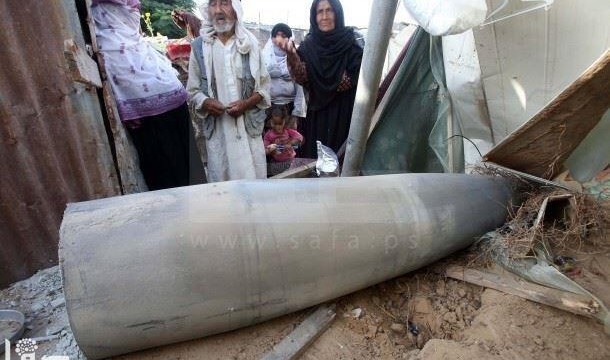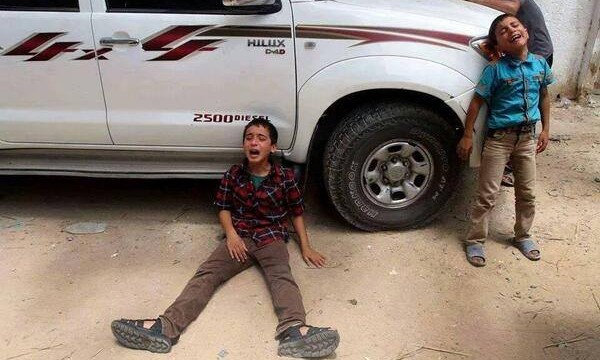Part I of a Feature Analysis on Operation Protective Edge
by Tascha Shahriari-Parsa and Alon Lapid

A child examining the vestiges of a house obliterated by an Israeli airstrike in the Al Sheikh Radwan neighborhood in Gaza City on July 11, 2014 (via activestills.org)
Last weekend, 17-year-old Anas Youssef Kandil of Gaza made the Facebook comment “I’m too tired, shell our home so I can get some sleep.” Not too long after, his home was in fact shelled, and he slept forever, as have over 40 other children and teenagers killed in Gaza since the operation began.
After ten days of continuous deadly military strikes on Gaza, the total death toll of Operation Protective Edge—the brutal campaign of the Israeli Defence Forces (IDF) that commenced on Tuesday, July 8th—has risen to well over 250 according to the Gaza Health Ministry , 77% of which are civilians : a grave number compared to the deaths of one Israeli soldier and one Israeli civilian. Over 1,400 have been wounded including around 400 children; over 17,000 have been displaced into UNRWA schools; over 1,200 homes have been destroyed; over 2,000 have been made homeless; and 600,000 are at risk of losing access to water supply.
When tragedy is so grand, it’s easy to be overwhelmed by such numbers and forget the pains that each family has suffered: not only those who have died, not only their loved ones, not only those injured or made homeless, but also every single Palestinian in Gaza who must live each day and night in fear — the inexpressible trepidation that they, like Anas, may not wake up the next morning.

One family in front of a bomb that, due to sheer luck, failed to detonate.
All of Israel’s strikes on Gaza are certainly classified as war crimes, extrajudicial killings and acts of collective punishment. With thousands of air raids taking place in the span of a mere week, the Gaza strip has endured an average of one air raid every 4 minutes . These air raids have targeted everything: civilian homes (including those of an economics professor , a former health minister , and the General Director of Shifa Hospital ), farms, police stations, mosques, schools, random streets, beaches, and even hospitals, water facilities, electricity lines and disability centers.
Three Minute Race with Death
Israel claims that these air raids are preceded by “roof knocking”: gentle mortars hitting homes to warn them of an incoming missile strike. The fact that such a thing would be used to justify the bombing of civilian homes is absurd in itself — in what universe is it acceptable to destroy people’s homes and force them into homelessness so long as they are notified 3 minutes in advance? The roof knocking strategy is merely used by Israel in order to avoid legal prosecution, so that Israel can proclaim how humanitarian it is for bombing civilian homes in such a compassionate manner. That being said, even the legitimacy of Israel’s claim that they consistently warn civilians whom they are about to bomb is under question too, as one video recorded a time of only 57 seconds between the warning strike and the missile that blew up a home. In other cases , family members who were not home have received warning calls on their cell phones, while their families — lacking the possession of a phone — were obliterated without warning. Moreover, it is not even clear whether Israel routinely warns its victims before striking them.

These children buried 18 members of their family, the Batsh family.
Click here for Part II of this five-part series on Palestine and Israel’s ‘Operation Protective Edge.’
Comments
